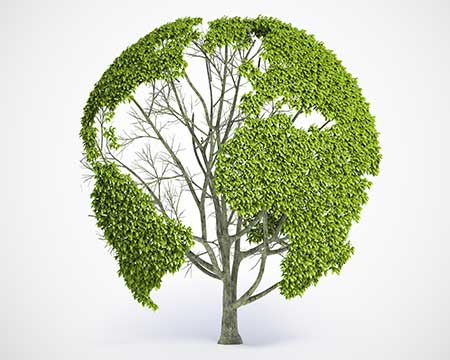
Partnering to Create a Green, Clean and Prosperous World

The 2030 Agenda, with its 17 Sustainable Development Goals (SDGs) and 169 targets, and the Paris Agreement, with its Nationally Determined Contributions (NDCs), put forth ambitious frameworks for accelerating action to achieve sustainable development objectives and limit global temperature rise to well below 2 degrees Celsius. In many ways, tackling climate change and securing sustainable development present inter-linked challenges, especially for the developing world.
With some innovation and a calibrated focus, action on achieving the SDGs can support steps needed for climate mitigation and adaptation. Similarly, climate actions can strengthen the sustained development of society as a whole. However, these two processes are presently operating largely parallel to each other, despite areas of overlap and convergence, and there is scope for complementary actions.
Both agendas visualize a transition towards more sustainable economies that will require urgent concrete actions at local, national and international levels to achieve tangible results. It is necessary to align both agendas, especially for developing countries, as also in order to reduce duplication and enhance efficiency. This is particularly relevant for the Asia-Pacific region where the impacts of a changing climate are aggravating the already severe and persistent developmental challenges faced by poor and vulnerable communities. The region’s geography also makes it more susceptible to natural disasters and the adverse impacts of gradual climate change events, such as melting glaciers, ocean acidification and rising sea levels.
Achieving these two vital and ambitious agendas, hinges upon our ability to forge effective partnerships between governments, the private sector and civil society. In acknowledgment of this fact, the SDG 17 seeks to revitalize the global partnership for sustainable development and explicitly recognizes multi-stakeholder partnerships as important vehicles for mobilizing and sharing knowledge, expertise, technologies and financial resources to support the achievement of global development agendas.
Effective partnerships in these areas require an enabling environment of good governance, policy coherence and adequate financing, besides effective communication and cooperation among different stakeholders and sectors. Empowering the developing world to more effectively access development and climate finance and environmentally sound technologies, besides boosting their capacity development, would also lead to a healthier global partnership. New partnerships, including voluntary participatory mechanisms that facilitate people’s engagement, are a valuable tool to drive change toward more responsible, inclusive and sustainable growth.
Partnerships can often be difficult to build and challenging to sustain and scale up as they may frequently entail high transaction costs. Also, cross-country partnerships will need to look closely at how targets under one agenda might affect those under the other agenda and how national targets could be most efficiently achieved through the partnership structure. A process of review and monitoring of partnerships might also be useful to demonstrate accomplishments and ensure transparency and accountability of initiatives.
As many countries are still developing and establishing the formal architecture needed for achieving their climate goals – through, inter alia, policy interventions, new administrative processes and monitoring frameworks - it is important to explore how these can also be used to help achieve the SDGs, while leveraging multi-stakeholder partnerships for enhancing effectiveness and efficiency. The inter-linkages of the objectives of both agendas provides an opportunity to implement them together while strengthening overall development achievements.
Questions for Discussion
- How can we better align climate commitments with the Sustainable Development Goals? What role can partnerships play in connecting the two agendas?
- Which sectors are most relevant for inter-linking the two agendas? What are the biggest hurdles in the path of achieving such inter-linkages?
- What are important aspects of a successful and effective sustainable development partnership?
- How can those in leadership roles strengthen partnerships for achieving sustainable development and climate goals?